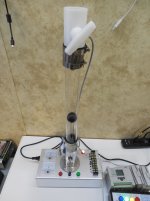You can measure Ohms at the field end if you can disconnect the wires. If not, then measure voltage, and assume a 250 Ohm load. If the input impedance is different, readings will be half or double what's expected.
You can only do that if you have a wire connected to the analog input common/negative in the field. If it's a two-wire loop-powered transmitter, all you have is a 24VDC from your DC P/S and the analog input positive, so you can't measure the reistance of your analog input. You can't measure voltage either - you'll get a small voltage drop across the transmitter (that is used to loop power it), but it will not correspond to the 4-20mA reading in any way.
Again, this sort of discussion is exactly the sort of discussion students should be having! Have them test a 0-10V input and see how easy it is, then have them go through the process of working out how much harder it is to do it with a 4-20mA signal in the field




